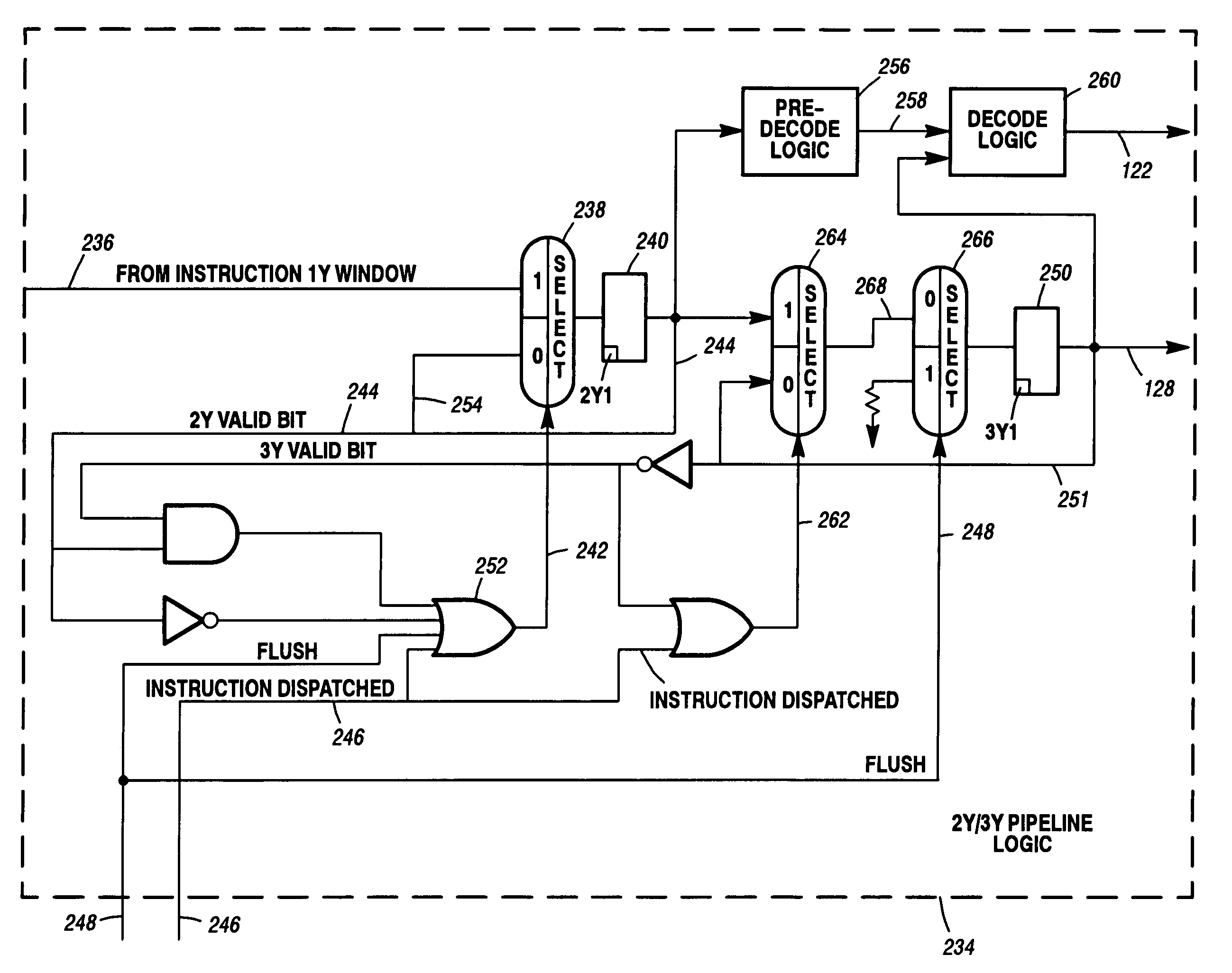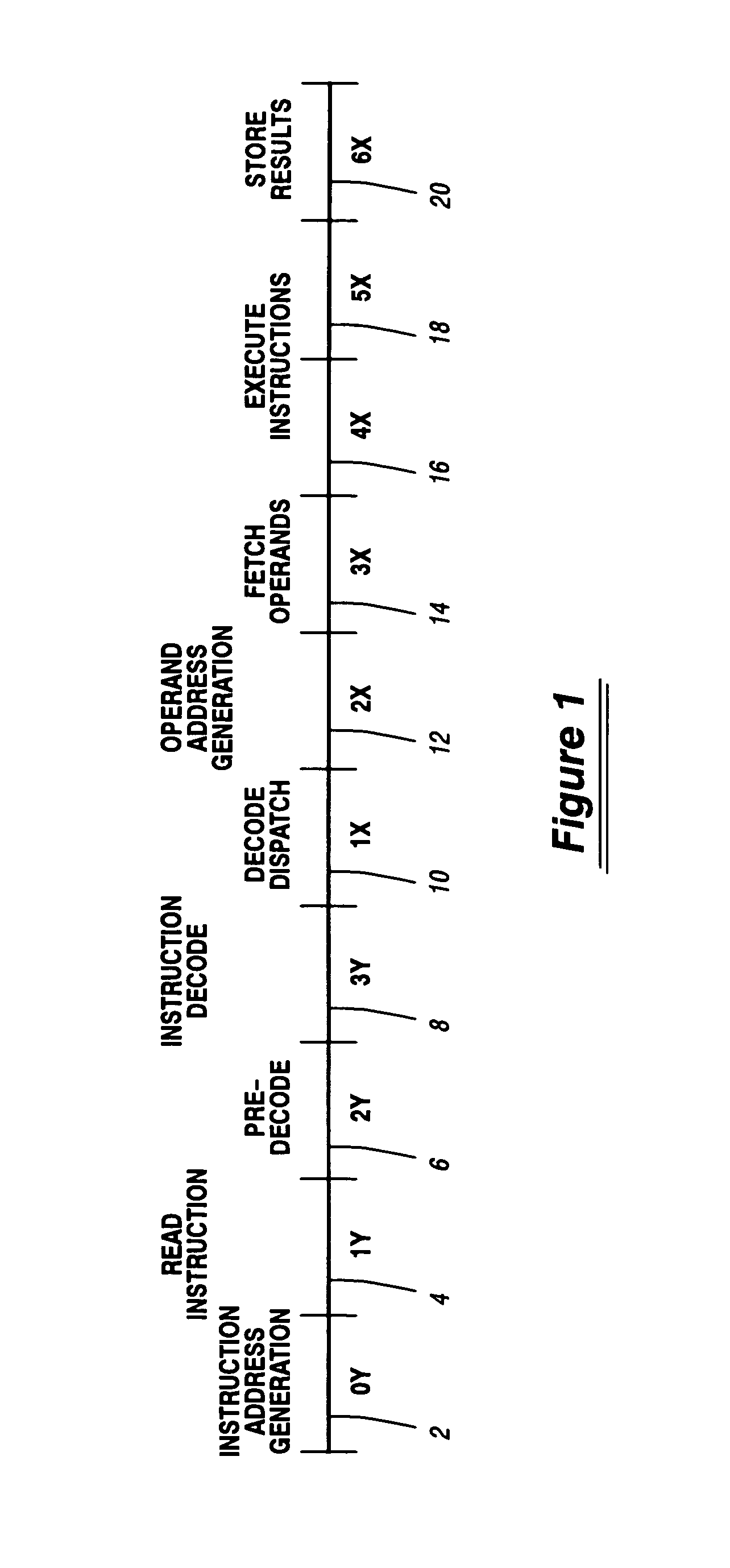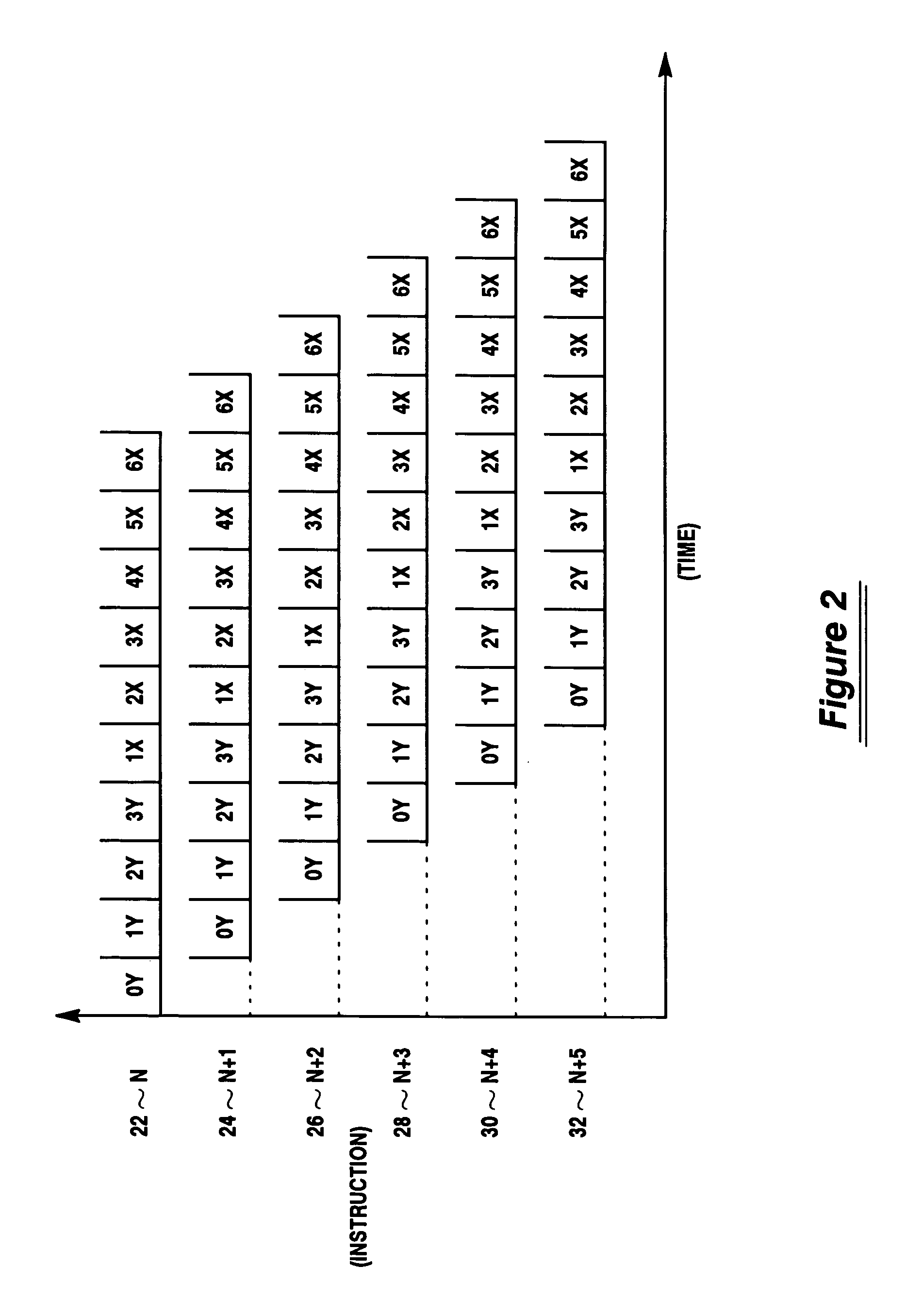Pipeline controller for providing independent execution between the preliminary and advanced stages of a synchronous pipeline
- Summary
- Abstract
- Description
- Claims
- Application Information
AI Technical Summary
Benefits of technology
Problems solved by technology
Method used
Image
Examples
Embodiment Construction
The Instruction Processor Environment of the Current Invention
[0047]FIG. 1 is a timing diagram showing pipelined execution of an instruction by an exemplary Instruction Processor (IP). Pipelined instruction execution is a method of increasing system throughput by dividing the execution of each instruction into functional operations that can be performed within different logic sections of the IP. Since each logic section of the IP can be processing somewhat independently from the other logic sections, the IP can be executing portions of several instructions at one time so that instruction execution is overlapped.
[0048]The timing diagram of FIG. 1 shows a standard instruction being divided into ten functional operations. Each of these functional operations may be referred to as stage of execution.
[0049]During the first stage, designated as the “0Y” stage 2, address generation occurs for the instruction. Next, the instruction is retrieved from cache memory during the “1Y” stage 4. Foll...
PUM
 Login to View More
Login to View More Abstract
Description
Claims
Application Information
 Login to View More
Login to View More - R&D
- Intellectual Property
- Life Sciences
- Materials
- Tech Scout
- Unparalleled Data Quality
- Higher Quality Content
- 60% Fewer Hallucinations
Browse by: Latest US Patents, China's latest patents, Technical Efficacy Thesaurus, Application Domain, Technology Topic, Popular Technical Reports.
© 2025 PatSnap. All rights reserved.Legal|Privacy policy|Modern Slavery Act Transparency Statement|Sitemap|About US| Contact US: help@patsnap.com



